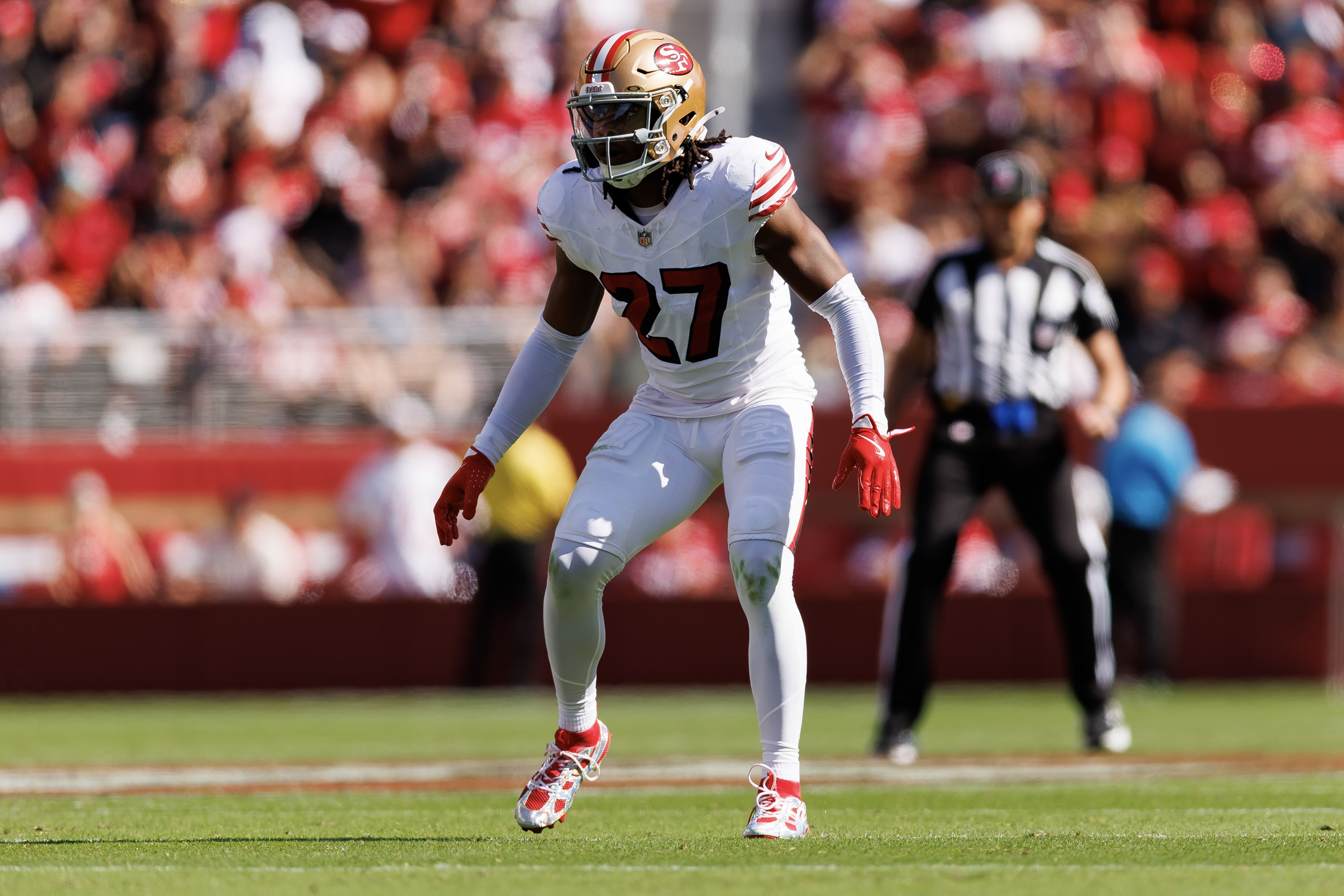
For the last few years, the 49ers have consistently been in a position to regularly put three safeties on the field at the same time.
They could have done so in 2023 with Talanoa Hufanga, Tashaun Gipson and Ji’Ayir Brown before the former suffered a torn ACL, and they had the chance to put Brown and Hufanga on their defense at the same time as Malik Mustapha last season.
Steve Wilks and Nick Sorensen eschewed the opportunity to make the most of the depth at safety. However, in his second spell as the defensive coordinator, Robert Saleh has dabbled with putting three safeties on the field, utilizing Brown’s versatility and playing him in the ‘big nickel’ role with Jason Pinnock and Marques Sigle staying in the lineup as safeties.
Operating as the big nickel, Brown spells rookie starting slot corner Upton Stout but can also play in the box alongside linebackers Fred Warner and Dee Winters.
That was something he did a lot in Week 3, as his defensive snaps ballooned from seven against the New Orleans Saints to 25 in the win over the Arizona Cardinals.
The benefits of having Brown in that role are several. In terms of the development of Stout, it takes some of the burden off the third-round rookie who, while producing some critical plays for the 49ers, has had his issues in pass coverage.
Beyond that, Brown in the big nickel role gives the 49ers extremely valuable flexibility.
Despite taking something of a step back last season, Brown has previously proven himself to be a reliable coverage defender from the slot. His pass defense upside, combined with his ability to move into the box and play the run effectively, in essence means they can have the best of both worlds.
Running the ball against nickel is typically a favorable situation for an offense. However, with Brown in the lineup as an aggressive downhill defender who can shoot gaps and expediently work off blocks, the 49ers have the capability to neutralize that advantage without losing much in pass defense.
Brown’s talents as a blitzer are a bonus that offer more scope for creativity to Saleh, who has shown intriguing variety in the pressure packages he has thrown at opponents to this point.
And it was clear Brown was an asset to the 49ers in Week 3.
Brown thrives in Big Nickel role
After making a key pass breakup against the Saints, Brown was a constant factor for the 49ers in run defense versus the Cardinals, his success in filling running lanes and occupying blockers consistently enabling San Francisco to stop run plays close to the line of scrimmage.
In pass coverage, Brown gave up three catches on three targets, two to Trey McBride and one to Tip Reiman. However, they amounted to just 15 yards, with only one going for more than five years.
Last week was also a case of numbers not telling the full story.
Brown was the nearest man in coverage on this eight-yard reception to McBride, but his spacial awareness in avoiding being taken out of the play by the receiver running downfield, and his awareness in breaking early on Kyler Murray’s throw, allowed him to close quickly and prevent what likely would have been a huge explosive play for the Cardinals.
That is the type of play that doesn’t really jump off the box score beyond being marked down as a tackle for Brown and a reception conceded, but it illustrates the value of having a player with his athletic ability and intangibles on the field as the big nickel.
Brown was unfortunate not to make a more pronounced impact with a sack on a perfect fire zone call from Saleh, with only the mobility of Murray preventing a negative play after Brown surged into the backfield. Few teams have a quarterback with Murray’s evasive ability, and the deployment of Brown as a blitzer is a weapon that should have greater success against less mobile signal-callers.
An answer to 12 personnel
The usage of Brown in Week 3 was largely necessitated by the frequency with which Cardinals go big.
Arizona is a team heavily reliant on 12 personnel, with this dependence illustrated by the fact McBride played 80 percent of their offensive snaps in Week 3, with fellow tight end Reiman playing 50 percent.
McBride had a decent outing with five catches for 43 yards and Arizona’s only touchdown. Yet the edge that heavier personnel grouping can give the Cardinals when running the ball against nickel was minimized, with Arizona posting just a 32 percent success rate running the ball and averaging minus 0.12 EPA per play on the ground.
Those struggles can be partially attributed to the loss of running back James Conner to a season-ending injury, but they were also a product of Brown boasting a skill set ideally suited to helping the 49er defense combat the impact of 12 personnel as it becomes an increasingly critical element of offensive gameplans around the league.
The 49ers will hope to see continued strides from Stout, but their diminutive slot corner is at a disadvantage when offenses go to 12 personnel.
Brown in the big nickel offers the 49ers a solution to that problem and, as Saleh aims to keep winning the chess match with opposing offensive coordinators throughout the season, it’s one he should continue to utilize.
